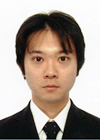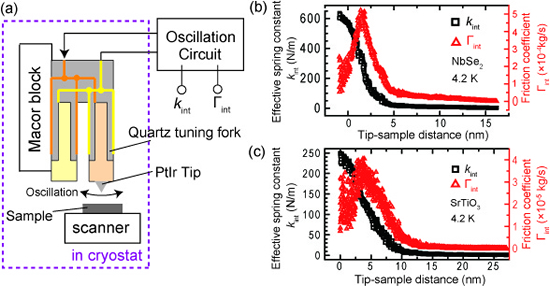
Kohta SAITOH
PD Researcher, Electronics and Photonics Research Institute, National Institute of Advanced Industrial Science and Technology (AIST)- Field of Specialty:
- Low Temperature Physics (Experiment)
- Topics of Research:
- (A01) Novel Edge Phenomena in Superconductors with Broken Time-Reversal Symmetry
■ Laboratory Website
RESEARCH
We have developed a low temperature scanning probe microscope (LT-SPM) and applied the LT-SPM to the studies of nanoscale friction. Friction is one of the most familiar physical phenomena, but the microscopic mechanism of friction has not been fully understood. Therefore, the studies of friction at the nanoscale are desired. Especially, we have studied noncontact friction, which is interesting friction between closely spaced two bodies at the nanoscale. As a possible mechanism of noncontact friction, Ohmic losses on the surfaces of bodies caused by electromagnetic fields have been considered. However, the mechanism of noncontact friction is still controversial. We measured noncontact friction between surfaces of superconducting NbSe2 and insulating SrTiO3 and a PtIr tip at low temperatures (Fig. (a)). The noncontact friction both on NbSe2 and SrTiO3 showed giant maxima at the tip-surface distance of several nanometers (Fig. (b), (c)). Our finding suggests the existence of a novel mechanism in noncontact friction, which is independent of the conductivity of sample materials.

In this project, we are planning to study the transport properties of tunneling or Josephson junctions fabricated in Sr2RuO4. At surfaces or interfaces of anisotropic superconductors, characteristic phenomena due to the phases of pair potential, such as Andreev bound states or unconventional Josephson effects, are observed. These phenomena have been utilized for determining the pairing symmetry of cooper pairs, such as d-wave in copper-oxide superconductors. In Sr2RuO4, the possible pairing symmetry has been considered to be chiral p-wave. Therefore, novel phenomena at surfaces or interfaces are expected. By studying the transport properties of micro fabricated tunneling or Josephson junctions, we are planning to determine the pairing symmetry of Sr2RuO4 and discover novel phenomena due to the anisotropy of the pair potential.
EDUCATION
- 2005
- BS, Keio University
- 2007
- MS, Keio University
- 2011
- Ph. D., Keio University (Advisor: Keiya Shirahama)
PROFESSIONAL EXPERIENCE
- 2008-2010
- Research Assistant, Global COE Program, Keio University
SELECTION OF PUBLICATIONS
"Gigantic Maximum of Nanoscale Noncontact Friction",
Kohta Saitoh, Kenichi Hayashi, Yoshiyuki Shibayama, and Keiya Shirahama
Phys. Rev. Lett.105, 236103_1-4 (2010).
"A low temperature scanning probe microscope using a quartz tuning fork",
K. Saitoh, K. Hayashi, Y. Shibayama and K. Shirahama
J. Phys. Conf. Ser.150, 012039_1-4 ( 2009 ).
"A current to voltage converter for cryogenics using a CMOS operational amplifier",
K. Hayashi, K. Saitoh, Y. Shibayama and K. Shirahama
J. Phys. Conf. Ser. 150, 012016_1-4 ( 2009 ).
"Development of a low temperature scanning probe microscope",
K. Saitoh, Y. Shibayama and K. Shirahama
J. Low Temp. Phys. 150, 561-566 ( 2008 ).

